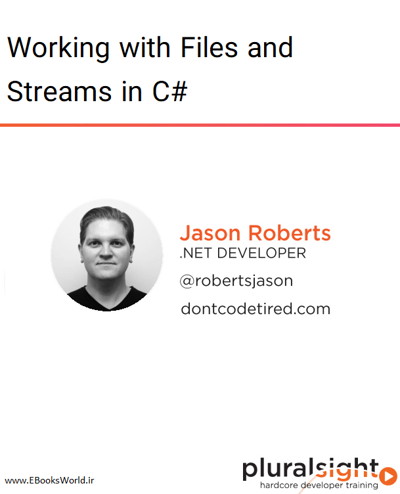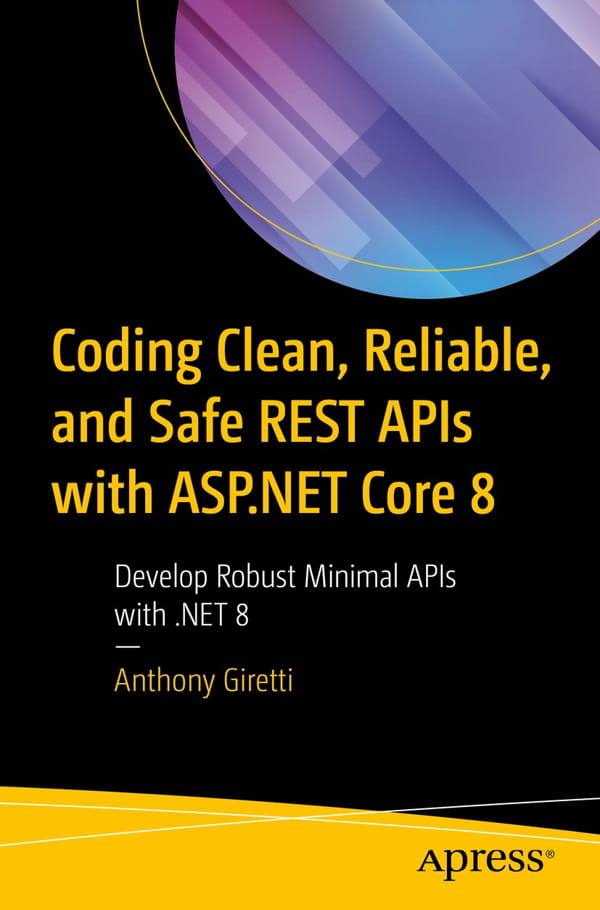در هسته C# file IO، دانش کاملی در مورد نحوه دستکاری فایلها و دایرکتوریها و همچنین استفاده از جریانها وجود دارد. در دوره ویدیویی #Working with Files and Streams in C موسسه Pluralsight که توسط Jason Roberts تدریس شده است، شما مهارتهای لازم برای خواندن و نوشتن فایلهای متنی، باینری و فایلهای CSV و کار با جریانهای داده را یاد خواهید گرفت.
ابتدا یاد میگیرید که چگونه فایلها و دایرکتوریهای دیسک را دستکاری کنید. سپس نحوه پاسخگویی به تغییرات در فایل سیستم و خواندن و نوشتن دادهها را با بارگذاری کل فایل در حافظه یا با پردازش تدریجی آنها با جریانها را فرا خواهید گرفت. سرانجام، چگونگی نوشتن کد IO قابل تست و نحوه استفاده از سیستم فایل تقلیدی را برای ایجاد تستهای سریعتر و قابل نگهداریتر بررسی خواهید کرد. وقتی که این دوره را به پایان رساندید، شما درکی اساسی از دسترسی به فایل و کد دستکاری جریانها خواهید داشت که به شما بسیار کمک میکنند تا رو به جلو حرکت کنید و برنامههای خودتان را برای دستکاری فایلها و یا جریانها بسازید.
فیلم آموزشی کار با فایلها و جریانها در سی شارپ موسسه پلورال سایت که توسط Jason Roberts تدریس شده است، دارای زیرنویس انگلیسی است.
Table of Contents:
Course Overview
- Course Overview
Managing Files and Directories
- Introduction
- Creating a New Console App
- Checking if a File Exists
- Getting the Parent Directory of a Path
- Checking if a Directory Exists and Creating New Directories
- Copying a File
- Moving a File
- Getting the File Extension from a File Name
- Deleting a Directory
- Enumerating All the Files in a Directory
- Summary
Monitoring the File System for Changes
- Introduction
- Introducing the FileSystemWatcher Class
- The InternalBufferSize Property
- Configuring Notification Filters
- Additional Properties
- Refactoring to Use a FileSystemWatcher
- Observing the FileSystemWatcher Events
- Automatically Processing Files
- Ignoring Duplicate FileSystemWatcher Events with a ConcurrentDictionary
- Ignoring Duplicate FileSystemWatcher Events with a MemoryCache
- Adding Existing File Processing
- FileSystemWatcher Testing Considerations
- Summary
Reading and Writing Entire Files into Memory
- Introduction
- Reading and Writing Text Files
- Reading and Writing Text Files with String Arrays
- Specifying Text Encodings
- Appending Text Content
- Reading and Writing the Entire Contents of Binary Files
- Considerations
- Summary
Reading and Writing Data Incrementally Using Streams
- Introduction
- An Introduction to Streams
- The Benefits of Streams
- .NET Class Hierarchy Overview
- Using Streams to Read and Write Text Content
- Simplifying StreamReader and StreamWriter Creation
- Selectively Processing Part of Stream
- Using Streams to Read and Write Binary Data
- Using BinaryReader and BinaryWriter
- Specifying Text Encodings
- Using Streams to Append Data
- Random FileStream Access
- MemoryStream Overview
- Summary
Reading and Writing CSV Data
- Introduction
- An Overview of the CsvHelper Library
- Reading CSV Data Dynamically
- Ignoring Blank Lines
- Configuring a Custom Delimiter
- Configuring CSV File Headers
- Reading Data into Entity Classes
- Configuring Header Validation and Missing Field Actions
- Configuring Custom Class Mapping
- Creating Custom Type Converters
- Writing CSV Files
- Summary
Creating Automated Tests for File Access Code
- Introduction
- The Problems with Testing File Access Code
- An Overview of System.IO.Abstractions
- Refactoring for Testability
- Adding a TextFileProcessor Test
- Adding a BinaryFileProcessor Test
- Adding a CsvFileProcessor Test
- Asserting Mock File Output with Approval Tests
- Summary, Resources, and Further Learning

 می پسندم
می پسندم
 به درد نمی خوره
به درد نمی خوره
















